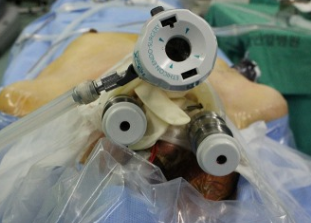Clinical Feature of Patulous Eustachian Tube and Correlation with Nasal Cavity Volume
Received: Sep 02, 2013; Revised: Sep 30, 2013; Accepted: Nov 08, 2013
Published Online: May 31, 2020
ABSTRACT
Background and Objectives: Patulous Eustachian tube (PET) is are caused by abnormal, non-attenuated sound transmission from the pharynx to the middle ear via an open Eustachian tube (ET). Our objective was to identify the causes, clinical feature, medical treatment of PET and analyze the correlation between nasal cavity volume and PET. Materials and Methods: A retrospective chart review was performed on 100 patients with a diagnosis of PET from March 1, 2010, to July 31, 2011. Anti-cholinergic nasal spray (Ipratropium bromide, Rhinovent®) was used as the medical treatment. Acoustic rhinometry and paranasal sinus computed tomography (CT) was prospectively performed to examine the correlation between nasal cavity volume. Results: There were 56 males and 44 females, and overall mean age at diagnosis was 38.9 years. Thirty-three patients had bilateral PET and 67 patients had unilateral PET. 77 patients has no identifiable cause and 17 patients has weight loss. Anti-cholinergic nasal spray treatment (Rhinovent®) was carried out on 64 of 100 patients and 34 of the 64 patients (53.1%) achieved an improvement. AR, paranasal sinus CT was revealed no statistically significant correlation between nasal cavity volume and PET. Conclusion: Unilateral PET was found to be twice as common as bilateral PET. Weight loss was found to be the most common cause and autophony to be the most common symptom. Anti-cholinergic nasal sprays can be used appropriately for early treatment. No correlation was found between nasal cavity volume and PET occurrence. (J Clinical Otolaryngol 2013;24:194–200)







